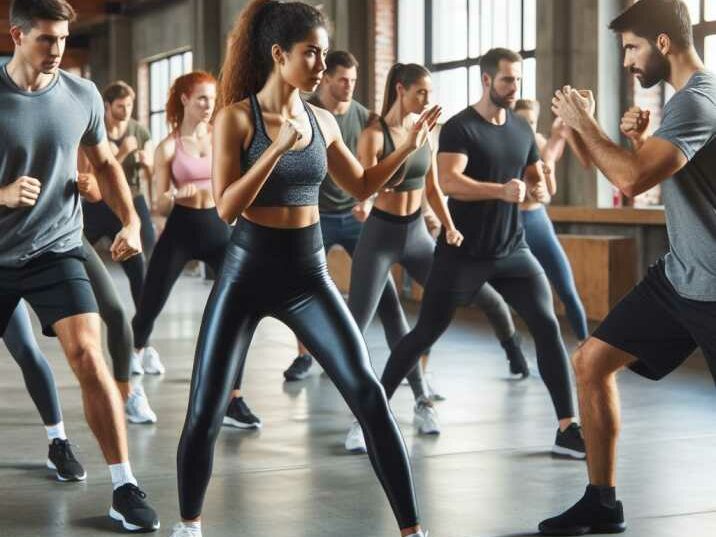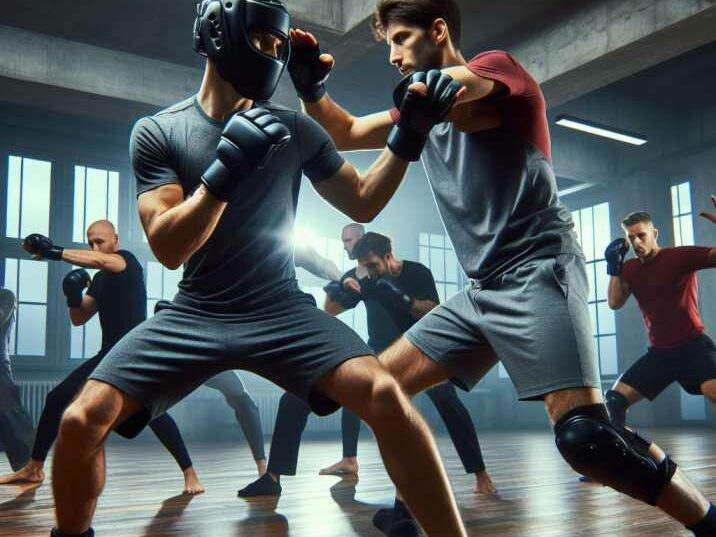Introduction:
Table of Contents
When it comes to choosing a martial art, many factors come into play. From self-defense to physical fitness, cultural heritage to personal preference, the options seem endless. In this comprehensive guide, we’ll delve into the topic: Discover the most practical martial art, By exploring various styles, their strengths, weaknesses, and practical applications, you’ll gain insights to make an informed decision about which martial art suits you best.
Table of Contents:
- Introduction
- Understanding the Concept of Practical Martial Art
- Brazilian Jiu-Jitsu (BJJ) – Grappling for Real-Life Situations
- Krav Maga – Practical Self-Defense Techniques
- Muay Thai – The Art of Eight Limbs
- Taekwondo – Precision and Agility in Combat
- Judo – Using Momentum to Overcome Opponents
- Wing Chun – Practical Close-Range Combat
- Boxing – Mastering the Sweet Science
- Considerations for Choosing a Martial Art
- The Role of Competition in Martial Arts
- Cross-Training and Martial Arts Fusion
- The Importance of Proper Technique and Safety
- Martial Arts as a Form of Mind-Body Exercise
- The Evolution of Martial Arts in the Modern World
- Martial Arts Ethics and Code of Conduct
- Conclusion
- FAQs (Frequently Asked Questions)
Understanding the Concept of Practical Martial Art
Before delving into specific martial arts styles, it’s crucial to understand what practicality entails in this context. Practicality encompasses effectiveness in self-defense situations, adaptability to real-life scenarios, ease of learning, and applicability to different body types and fitness levels.
Brazilian Jiu-Jitsu (BJJ) – Grappling for Real-Life Situations
Brazilian Jiu-Jitsu, often touted as one of the most practical martial arts, focuses on ground fighting and submissions. Its effectiveness lies in neutralizing larger opponents through leverage and technique rather than relying on brute strength. BJJ teaches practitioners to control and submit opponents, making it ideal for self-defense situations, especially against assailants who may be bigger or stronger.
Krav Maga – Practical Self-Defense Techniques
Krav Maga, developed for the Israeli military, prioritizes practical self-defense techniques that are easy to learn and apply under stress. Its techniques include striking, grappling, and defenses against weapons. Krav Maga emphasizes instinctive movements and aggressive counterattacks, making it suitable for real-life confrontations where quick thinking and decisive action are essential.

Muay Thai – The Art of Eight Limbs
Muay Thai, also known as Thai boxing, is renowned for its effectiveness in striking and clinch fighting. Practitioners utilize punches, kicks, elbows, and knees, earning it the moniker “the art of eight limbs.” Muay Thai’s practicality lies in its focus on powerful, efficient techniques that can incapacitate opponents swiftly. It enhances cardiovascular fitness, endurance, and mental toughness, making it a well-rounded martial art for self-defense and overall fitness.
Taekwondo – Precision and Agility in Combat
Taekwondo, characterized by its dynamic kicks and fluid movements, emphasizes speed, agility, and precision. While primarily known as a sport martial art, Taekwondo incorporates practical self-defense techniques such as strikes, blocks, and evasive maneuvers. Its emphasis on flexibility and kicking techniques makes it effective for keeping distance from attackers and delivering powerful strikes when necessary.
Judo – Using Momentum to Overcome Opponents
Judo, translated as “the gentle way,” focuses on using an opponent’s momentum and strength against them. Its practicality lies in its emphasis on throws, takedowns, and joint locks, making it suitable for self-defense situations where neutralizing opponents quickly and efficiently is paramount. Judo’s principles of balance, leverage, and timing make it applicable for individuals of varying sizes and strengths.
Wing Chun – Practical Close-Range Combat
Wing Chun, a Chinese martial art, prioritizes close-range combat and simultaneous defense and attack movements. Its practicality stems from its efficiency in close quarters, allowing practitioners to defend against and counter strikes rapidly. Wing Chun’s emphasis on sensitivity and relaxation enables practitioners to adapt to dynamic situations and overcome opponents with minimal effort.
Boxing – Mastering the Sweet Science
Boxing, known as the “sweet science,” focuses on punching techniques, footwork, and head movement. Its practicality lies in its simplicity and effectiveness in striking, especially in close-range encounters. Boxing enhances hand-eye coordination, speed, and endurance, making it a practical martial art for self-defense and improving overall fitness.
Considerations for Choosing a Martial Art
Before selecting a practical martial arts, it’s essential to consider personal preferences, fitness goals, and practical considerations such as accessibility to training facilities and the availability of qualified instructors. Factors such as the martial art’s philosophy, training intensity, and community atmosphere can also influence your decision.

The Role of Competition in Martial Arts
Many martial arts offer opportunities for competition, ranging from local tournaments to international championships. Engaging in competitive events can provide practitioners with valuable experience, test their skills under pressure, and foster a sense of camaraderie within the martial arts community. However, competition may not be suitable for everyone, and some individuals may prefer to focus solely on self-improvement and personal growth through martial arts training.
Cross-Training and Martial Arts Fusion
Cross-training involves incorporating elements from multiple martial arts disciplines into one’s training regimen. This approach allows practitioners to explore different techniques, principles, and strategies, leading to a more well-rounded skill set. Martial arts fusion, on the other hand, involves blending techniques from various styles to create a hybrid martial art tailored to specific needs or preferences. Both cross-training and fusion can enhance versatility and creativity in martial arts practice.
The Importance of Proper Technique and Safety
Regardless of the martial art you choose, emphasizing proper technique and safety is paramount to prevent injuries and maximize effectiveness. Beginners should focus on mastering fundamental movements and gradually progress to more advanced techniques under the guidance of experienced instructors. Additionally, investing in quality protective gear, such as gloves, shin guards, and mouthguards, can help reduce the risk of injury during training and sparring sessions.
Martial Arts as a Form of Mind-Body Exercise
Beyond physical fitness benefits, martial arts training offers numerous mental and emotional benefits. Practicing martial arts promotes discipline, focus, and self-confidence while reducing stress and anxiety. Many martial arts incorporate mindfulness practices such as meditation and breathing exercises, fostering a holistic approach to health and well-being.
The Evolution of Martial Arts in the Modern World
As society evolves, so too do martial arts practices and philosophies. Contemporary martial arts schools may integrate elements of fitness training, self-defense techniques, and character development to meet the needs of today’s practitioners. Additionally, advancements in technology have facilitated the dissemination of martial arts knowledge through online resources, instructional videos, and virtual training platforms, making martial arts more accessible to a global audience.
Martial Arts Ethics and Code of Conduct
Most traditional martial arts adhere to a code of ethics or principles that guide practitioners’ behavior both inside and outside the training environment. Respect, humility, and integrity are often emphasized, along with concepts such as sportsmanship and non-violence. Practitioners are encouraged to apply these principles in their daily lives, fostering a sense of responsibility and respect for others.
Conclusion:
In the quest to determine the most practical martial art, it’s essential to consider various factors such as personal goals, physical abilities, and the specific context in which the martial art will be applied. While each martial art offers unique strengths and practical applications, there is no one-size-fits-all answer. By exploring different styles and understanding their principles, individuals can choose the martial art that aligns with their needs and preferences, ultimately empowering them to defend themselves and achieve their fitness goals effectively.
FAQs (Frequently Asked Questions):
- How long does it typically take to become proficient in a martial art?
- The time it takes to become proficient varies depending on factors such as the individual’s dedication, natural aptitude, and the complexity of the martial art. Generally, consistent practice over several months to years is necessary to attain proficiency.
- Can martial arts training help build self-confidence?
- Absolutely. Martial arts training not only teaches physical techniques but also instills discipline, resilience, and self-awareness, all of which contribute to improved self-confidence and self-esteem.
- Are there specific martial arts styles tailored for women?
- While many martial arts are suitable for everyone, some styles may focus more on leveraging technique and strategy over physical strength, making them particularly appealing to women. It’s essential to find an inclusive training environment that prioritizes skill development and empowerment for all practitioners.
- Can practicing martial arts help alleviate stress?
- Yes, martial arts training can serve as an effective stress-relief outlet. The physical exertion and mental focus required during training help reduce stress levels by releasing endorphins and promoting mindfulness.
- Is it possible to practice martial arts at home?
- While practicing martial arts at home can supplement formal training, it’s crucial to approach it safely and with proper guidance. Utilizing instructional resources, practicing fundamental techniques, and incorporating conditioning exercises can enhance skills between formal classes. However, seeking feedback from a qualified instructor is recommended to ensure correct technique and prevent injury.


